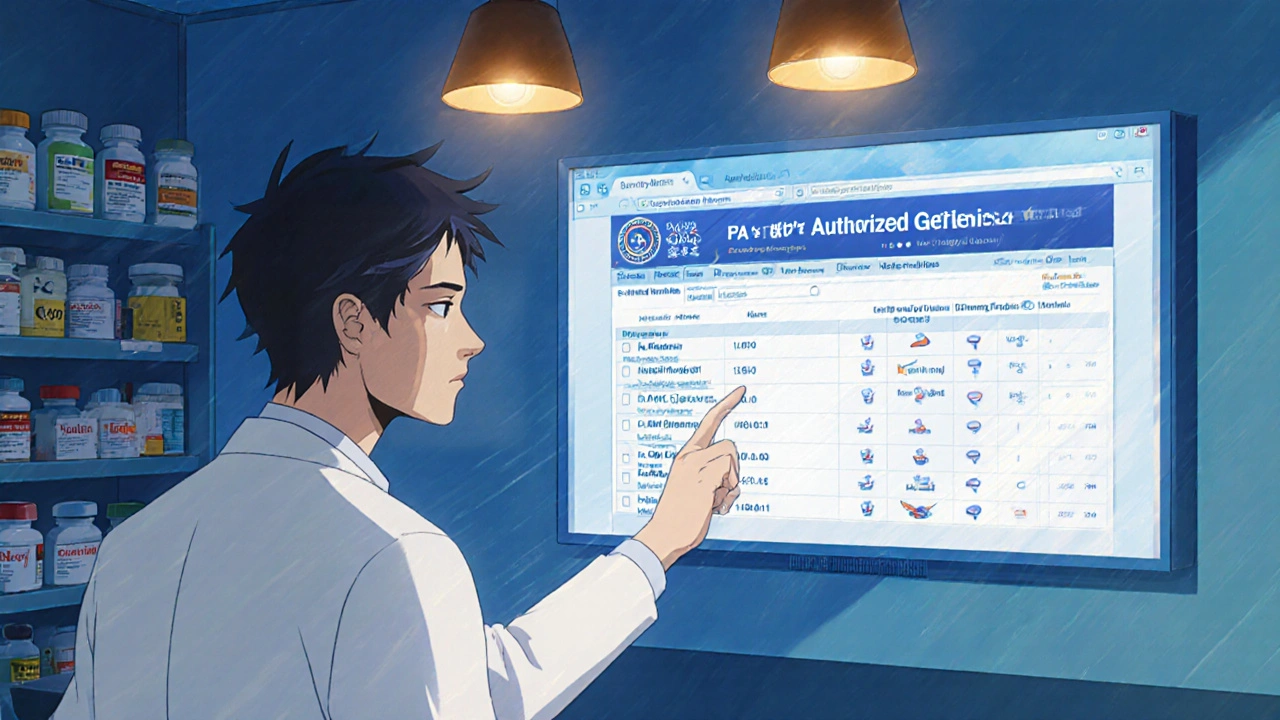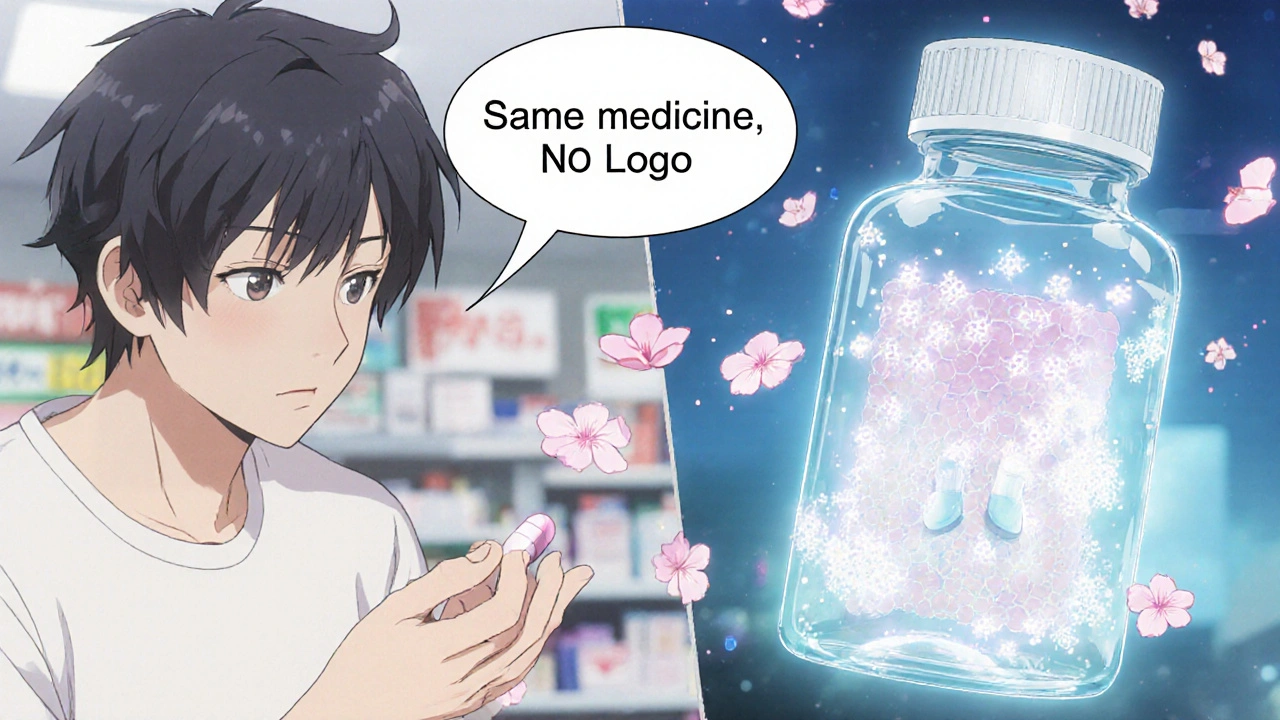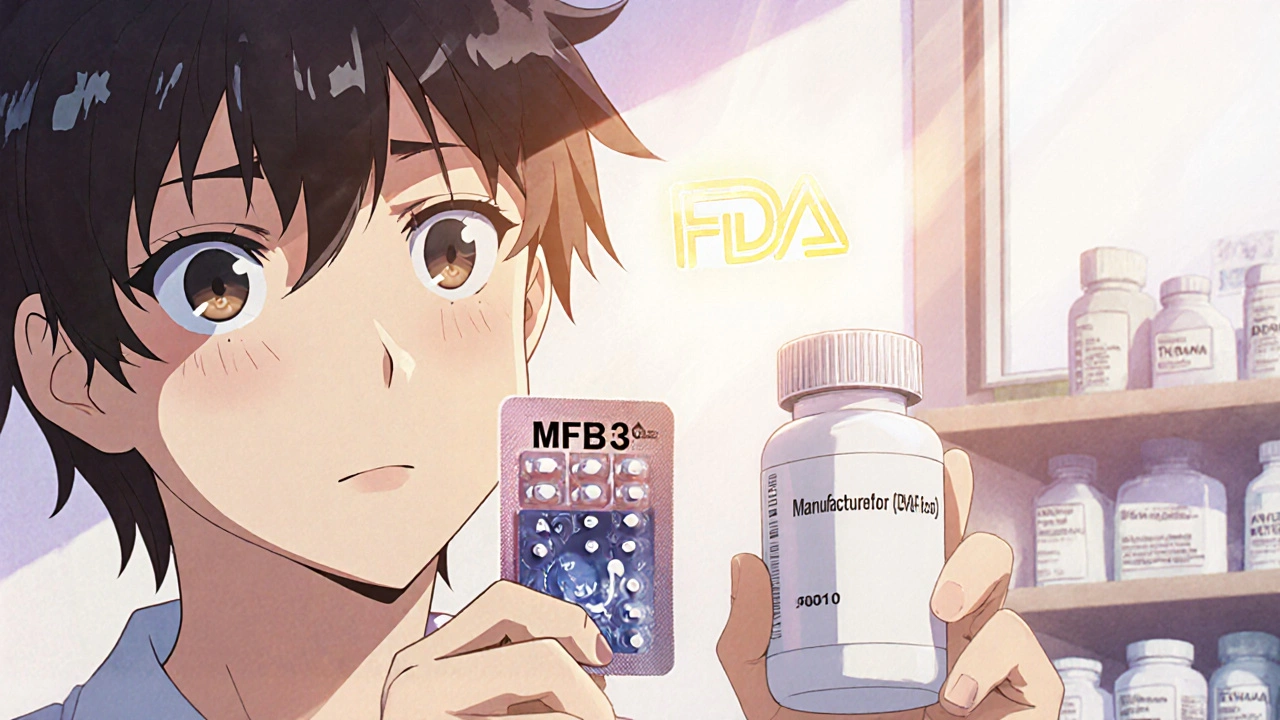When your prescription switches from the brand-name drug you’ve been taking to a cheaper version, it’s easy to panic. Is this the same medicine? Will it work the same way? What if something goes wrong? The truth is, if you’re being switched to an authorized generic, you’re not getting a different drug-you’re getting the exact same one, just without the brand name on the bottle.
What Exactly Is an Authorized Generic?
An authorized generic is a brand-name drug made by the same company that produces the original, but sold under a different label. It has the same active ingredients, the same inactive ingredients, the same shape, the same strength, and it’s made in the same factory using the same process. The only difference? No brand name on the packaging. This isn’t a traditional generic. Traditional generics are made by other companies and must prove they work the same way through testing. Authorized generics skip that step because they’re literally the same product. The FDA tracks them in the Orange Book, and they’re required to be reported quarterly. In Australia, the TGA (Therapeutic Goods Administration) has similar rules, though they don’t use the term "authorized generic"-they just call them "identical products". You might be surprised to learn that about 20-25% of brand-name drugs with generic versions also have an authorized generic option. And when they do, prices often drop by 10-18% right away. For a monthly prescription that costs $120, that could mean saving $12-$22 per month-over $150 a year.Why Do Authorized Generics Exist?
It sounds counterintuitive: why would a brand-name company sell its own drug as a cheaper generic? The answer is competition. When a brand drug’s patent expires, another company can file to make a generic version. Under U.S. law, the first company to file gets 180 days of exclusive rights to sell that generic. But during that time, the original brand company can also launch its own version-called an authorized generic-and sell it at a lower price. This forces the first generic maker to lower their price too, or risk losing market share. The result? Lower prices for you. The Federal Trade Commission found that when an authorized generic enters the market during that 180-day window, retail prices drop by 4-8%, and wholesale prices drop by 7-14%. That’s not a small bump-it’s a real savings. Some critics say this strategy lets big pharma control the market and discourage real competition. But for patients? It means cheaper medicine, faster.How to Know If You’re Getting an Authorized Generic
Not every generic is an authorized generic. Many are made by third-party manufacturers and may look different-even if they work the same. So how do you tell? First, check the label. Authorized generics often say something like “Manufactured for [Brand Name]” or “Distributed by [Brand Name] Company.” They might even have the same imprint code as the brand pill. Second, ask your pharmacist. They can tell you if what you’re getting is an authorized generic. Most pharmacies have access to databases that flag these products. Third, look up the drug on the FDA’s website. The FDA publishes a quarterly list of all authorized generics. You can search by brand name and see if an authorized version exists. In Australia, check the TGA’s database for identical products. Don’t assume all generics are the same. If you’ve had bad reactions to a previous generic, it might have had different fillers or dyes. An authorized generic won’t have that issue-it’s the exact same formula.What to Expect When You Switch
The biggest surprise? The pill looks different. Even though the medicine inside is identical, the color, shape, or size might change. That’s because the brand company often uses different packaging or labeling for the authorized version. For example, a blue 10mg pill from the brand might become a white oval pill with the same imprint code-but no brand logo. Many patients worry this means it’s not the same. But it’s not. The FDA requires authorized generics to be identical in every way that matters: how the drug is absorbed, how long it lasts, how it works in your body. Studies show that patients who switch to authorized generics have the same rates of adherence, hospital visits, and side effects as those who stay on the brand. One 2018 study tracked over 10,000 patients switching from brand to authorized generic and found no difference in outcomes. Still, it’s normal to feel uneasy. If you’re anxious, ask your pharmacist to show you the pill side-by-side with the brand version. Point out the imprint code. Show them the FDA list. Knowledge eases fear.
Insurance and Cost: How It Affects Your Pocket
This is where the real benefit kicks in. Most insurance plans, including Medicare Part D, automatically switch you to the lowest-cost option. If an authorized generic is available, you’ll get it unless you specifically ask for the brand. And even then, you’ll pay more. In 2022, Medicare Part D data showed that 80-90% of prescriptions for drugs with authorized generics were filled with the AG version. Patients saved an average of $15-$30 per prescription. That’s not just a few bucks-it’s hundreds over the year. Some specialty drugs-like those for diabetes, high blood pressure, or mental health-can cost over $300 a month. Switching to an authorized generic could cut that in half. But here’s the catch: some insurance plans require prior authorization if you want to stay on the brand. If you’re not sure, call your insurer. Ask: “Is there an authorized generic for [drug name]? And if so, is it the preferred option?”What to Do If You’re Switched Without Warning
Sometimes, your pharmacy will switch your prescription without telling you. You might pick up your refill and think, “This doesn’t look right.” Don’t panic. Don’t stop taking it. Call your pharmacist. Ask:- Is this an authorized generic?
- Is it made by the same company as the brand?
- Can you show me the label or the FDA list?
Common Myths About Authorized Generics
There’s a lot of misinformation out there. Let’s clear up the biggest myths:- Myth: “It’s not as strong.” Truth: It’s the same dosage, same absorption, same effectiveness.
- Myth: “It’s made in a worse factory.” Truth: Same factory. Same line. Same quality control.
- Myth: “My doctor didn’t approve this.” Truth: Pharmacists are licensed to substitute generics unless the doctor writes “dispense as written.”
- Myth: “It’s just a cheaper version.” Truth: It’s not cheaper because it’s worse-it’s cheaper because it doesn’t have marketing costs.

When You Should Avoid Switching
For most people, switching to an authorized generic is safe and smart. But there are exceptions. If you have a known allergy to a specific dye or filler-even in the brand version-check the inactive ingredients. Authorized generics use the same ones, so that’s fine. But if you’ve had a reaction to a traditional generic, it might have had a different filler. In that case, ask for the authorized version specifically. Also, if you’re on a medication where tiny changes in blood levels matter-like warfarin, thyroid meds, or some seizure drugs-stick with the same version unless your doctor says otherwise. Even though authorized generics are identical, consistency matters in these cases.How to Talk to Your Doctor About It
You don’t need to be an expert to have this conversation. Just say: > “I noticed my prescription switched to a different-looking pill. I heard it might be an authorized generic. Is that safe? Is it the same as the brand?” Most doctors know about authorized generics. Many support them because they reduce costs without risking effectiveness. If your doctor is hesitant, ask them to check the FDA’s list. Or ask for a copy of the prescribing information for both the brand and the generic. You’ll see they’re identical.Final Thoughts: Save Money, Keep Your Health
Switching from brand to authorized generic isn’t a compromise-it’s a smart upgrade. You get the same medicine, same results, same safety, but at a lower price. And if your insurance is already switching you, you’re already saving. The next time you pick up your prescription and the pill looks different, don’t assume it’s worse. Ask. Check. Confirm. You might be holding the exact same drug your doctor prescribed-just without the logo. And that’s not just a cost-saving trick. It’s better medicine for everyone.Are authorized generics the same as brand-name drugs?
Yes. Authorized generics contain the exact same active and inactive ingredients as the brand-name drug, are made in the same facility using the same process, and are subject to the same FDA quality standards. The only difference is the packaging-no brand name or logo.
Why does the pill look different when I switch to an authorized generic?
The pill’s appearance can change because the brand company uses different packaging or coloring for the authorized version. But the imprint code, strength, and formulation are identical. Changes in color or shape are cosmetic and don’t affect how the drug works.
How do I know if my drug has an authorized generic?
Check the FDA’s quarterly list of authorized generics or ask your pharmacist. You can also look at the label-authorized generics often say "Manufactured for [Brand Name]" or include the brand company’s name on the packaging. Not all generics are authorized-only those made by the original brand company.
Will my insurance cover an authorized generic?
Yes-most insurance plans, including Medicare Part D, automatically cover authorized generics because they’re the lowest-cost option. In fact, 80-90% of prescriptions for drugs with authorized generics are filled with them. You’ll pay less out-of-pocket, often $15-$30 less per month.
Can I ask for the brand instead of the authorized generic?
Yes, but you’ll likely pay more. Your doctor can write “dispense as written” on the prescription to prevent substitution. However, your insurance may require prior authorization, and you’ll pay the full brand price unless you qualify for a financial assistance program.
Are authorized generics safe for people with allergies?
Yes-if you’re allergic to a specific inactive ingredient in the brand, the authorized generic will contain the same one. But if you’ve had a reaction to a traditional generic, it might have had a different filler. In that case, ask for the authorized version-it’s the safest choice because it matches the brand exactly.
Do authorized generics work as quickly as brand-name drugs?
Yes. Because they’re identical in formulation and manufacturing, authorized generics are absorbed into your body at the same rate and to the same extent as the brand. Studies show no difference in effectiveness or how fast they work.


so like... if the FDA says it's the same, why do i still feel weird after switching? i swear my anxiety meds feel 'off' now, like my brain is on a slow-mo setting? maybe the fillers are secretly controlled by the illuminati? or maybe Big Pharma just wants us to think we're saving money while they're actually testing mind-control additives? i'm not paranoid, i just read the label too closely...